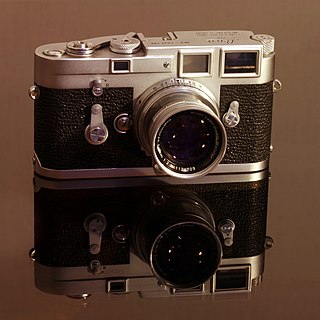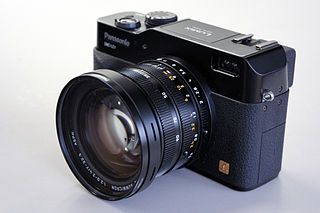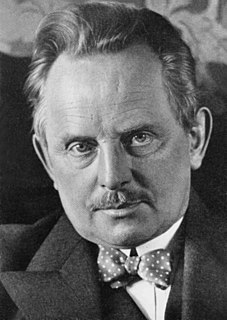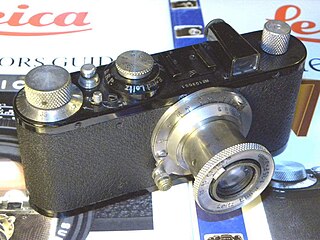
A rangefinder camera is a camera fitted with a rangefinder, typically a split-image rangefinder: a range-finding focusing mechanism allowing the photographer to measure the subject distance and take photographs that are in sharp focus. Most varieties of rangefinder show two images of the same subject, one of which moves when a calibrated wheel is turned; when the two images coincide and fuse into one, the distance can be read off the wheel. Older, non-coupled rangefinder cameras display the focusing distance and require the photographer to transfer the value to the lens focus ring; cameras without built-in rangefinders could have an external rangefinder fitted into the accessory shoe. Earlier cameras of this type had separate viewfinder and rangefinder windows; later the rangefinder was incorporated into the viewfinder. More modern designs have rangefinders coupled to the focusing mechanism so that the lens is focused correctly when the rangefinder images fuse; compare with the focusing screen in non-autofocus SLRs.

Leica Camera AG is a German company that manufactures cameras, lenses, binoculars, rifle scopes, microscopes and ophthalmic lenses. The company was founded by Ernst Leitz in 1914. The name Leica is derived from the first three letters of his surname (Leitz) and the first two of the word camera: lei-ca.

Minolta Co., Ltd. was a Japanese manufacturer of cameras, camera accessories, photocopiers, fax machines, and laser printers. Minolta was founded in Osaka, Japan, in 1928 as Nichi-Doku Shashinki Shōten. It is perhaps best known for making the first integrated autofocus 35 mm SLR camera system. In 1931, the company adopted its current name, an acronym for "Mechanism, Instruments, Optics, and Lenses by Tashima". In 1933, the brand name first appeared on a camera, a copy of the Plaubel Makina simply called "Minolta".

Contax began as a camera model in the Zeiss Ikon line in 1932, and later became a brand name. The early cameras were among the finest in the world, typically featuring high quality Zeiss interchangeable lenses. The final products under the Contax name were a line of 35 mm, medium format, and digital cameras engineered and manufactured by Kyocera, and featuring modern Zeiss optics. In 2005, Kyocera announced that it would no longer produce Contax cameras. The rights to the brand are currently part of Carl Zeiss AG, but no Contax cameras are currently in production, and the brand is considered dormant.

The Leica M3 is a 35 mm rangefinder camera by Ernst Leitz GmbH, introduced in 1954. It was a new starting point for Leitz, which until then had only produced screw-mount Leica cameras that were incremental improvements to its original Leica (Ur-Leica). The M3 introduced several features to the Leica, among them the combination of viewfinder and rangefinder in one bright window, like on the Contax II, a bayonet lens mount, and rapid film advance lever. It was the most successful model of the M series, with over 220,000 units sold by the time production of the M3 model ended in 1966.

The FED is a Soviet rangefinder camera, mass-produced from 1934 until around 1996, and also the name of the factory that made it.

Lumix is Panasonic's brand of digital cameras, ranging from pocket point-and-shoot models to digital SLRs.

Oskar Barnack was an inventor and German photographer who built, in 1913, what would later become the first commercially successful 35mm still-camera, subsequently called Ur-Leica at Ernst Leitz Optische Werke in Wetzlar.

The M39 lens mount is a screw thread mounting system for attaching lenses to 35 mm cameras, primarily rangefinder (RF) Leicas. It is also the most common mount for Photographic enlarger lenses.

The Leica R bayonet mount is a camera lens mount system introduced by Leitz in 1964. The R mount is the standard method of connecting a lens to the Leica R series of 35 mm single-lens reflex cameras. The mount is descended from those used for the Leicaflex, Leicaflex SL and Leicaflex SL2 SLR cameras, but differs in the cams used to communicate lens aperture information to the camera. 3 cam lenses are compatible with all of the Leica SLR cameras, while R-only lenses have a slightly different mount shape that will not fit on the earlier cameras.

Lens speed refers to the maximum aperture diameter, or minimum f-number, of a photographic lens. A lens with a larger maximum aperture is called a "fast lens" because it can achieve the same exposure with a faster shutter speed. Conversely, a smaller maximum aperture is "slow" because it delivers less light intensity and requires a slower (longer) shutter speed.
Walter Mandler was a famous lens designer of Ernst Leitz Canada in Midland, Ontario.

The Leica CL is a 35mm compact rangefinder camera with interchangeable lenses in the Leica M-mount. It was developed in collaboration with Minolta who manufactured it. It first appeared in April 1973 and was released in the Japanese market in November 1973 as the Leitz Minolta CL. Both the Leica CL and Leitz Minolta CL were manufactured in a new Minolta factory in Osaka. In 2017, Leica announced a new digital mirrorless camera, again named Leica CL.

The Konica Hexar RF is a 35 mm rangefinder camera which was sold by Konica. It was introduced to the market on 13 October 1999. and subsequently discontinued some time before the end of 2003. The camera used the "Bayonet Konica KM-mount", a copy of the Leica M-mount, thus sharing interchangeable lenses with those designed for Leica cameras and others compatible with them. The Hexar RF has a combined rangefinder/viewfinder modeled on that of Leica cameras, a similar body shape and size - and so is similar to Leica M-mount cameras in many aspects of operation.

The Bessa family of cameras is manufactured in Japan by Cosina as a revival of the Voigtländer brand name.

The Leica Standard, Model E was the fourth version of the original 35 mm Leica camera to be launched from Ernst Leitz in Wetzlar, Germany. The concept was conceived by their employee Oskar Barnack in 1913. Production of the camera began in 1925 but it was not until the end of the decade that it was perfected and full-scale production was established.

The Leicaflex was the first series of 35mm single-lens reflex (SLR) cameras manufactured by Leitz. The Leicaflexes were fully mechanical cameras marketed between 1964 and 1976, in response to the rapid increase in popularity and usability of SLRs during this period. Their appeal was limited by their failure to keep pace with the state of the art in SLR design, their somewhat limited selection of accessories, and their extremely high price in comparison with their Japanese competitors. They were ultimately replaced by the R series Leicas developed by Leitz with the assistance of Minolta under a cooperation agreement between the two companies.

The Leica L-Mount is a bayonet mount developed by Leica Camera AG for interchangeable-lens autofocus digital cameras.

The name Elmar is used by Leica to designate camera lenses that have a maximum aperture of f/3.98 or f/4.0.

The name Summaron is used by Leica to designate camera lenses that have a maximum aperture of f/2.8 or f/3.5 or f/5.6.



















